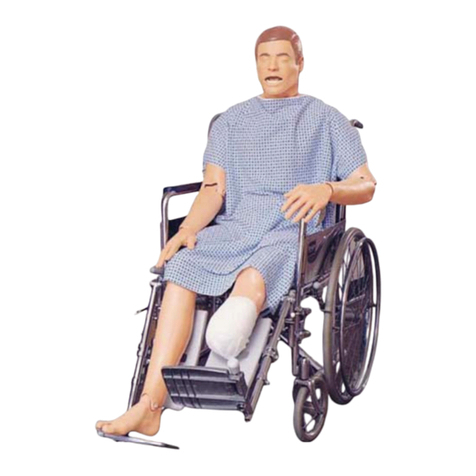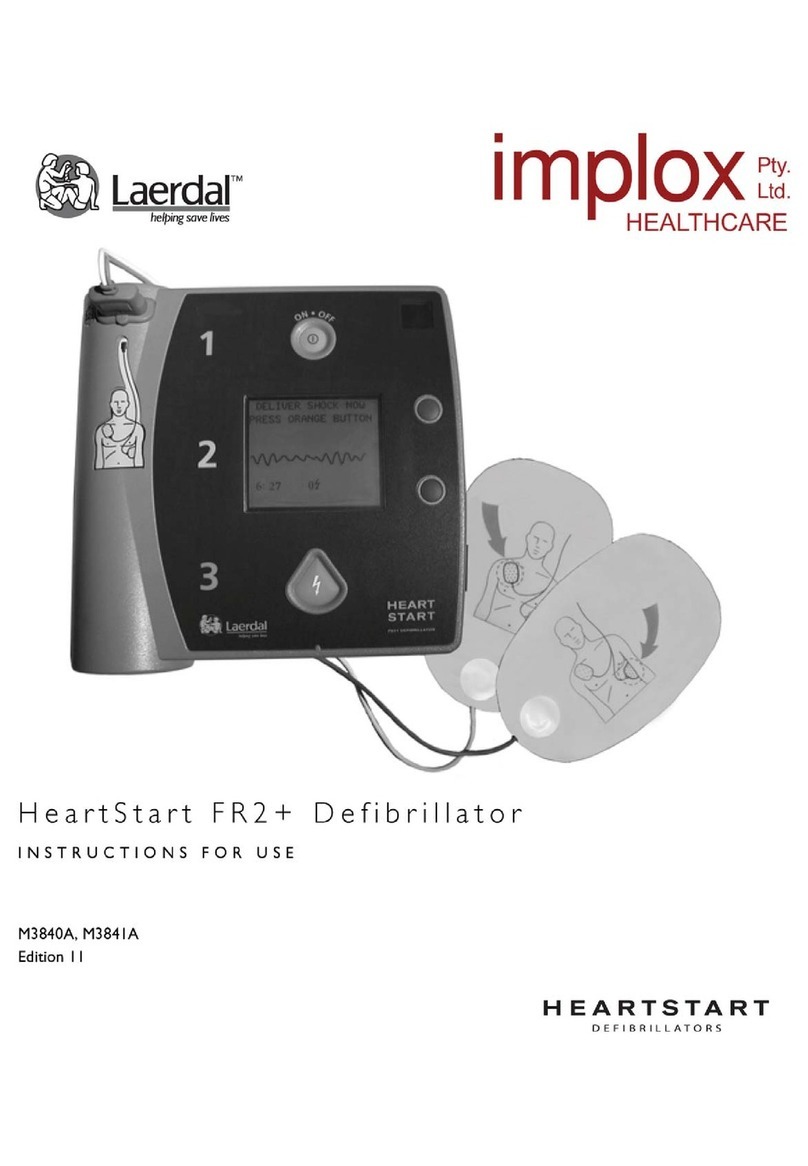
Cat.no. Description Cat.no. Description Cat.no. Description
220-03650 Meconium Kit
220-00650 Baby Pants
250-21050 Airway Lubricant
300-00750 Red Simulated Blood
276-15550 Liquid Soap
277-00150 Baby Powder
240-01050 Carry Case
220-05550 Umbilical Pulse Bulb
220-05650 Umbilical Clamp
220-05750 IV Bag Connector Tube
220-19250 Directions for Use CD
5527 Laerdal Global Warrranty
Optional Accessories: (Not shown)
200-03050 Eye Kit
220-00350 Right & Left IO Mandrel and Leg
Skin Kit
220-00150 Umbilical Cord (4)
240-00250 Umbi Simulated Blood
220-00250 IV Bag &Tubing Set
3
ENGLISH
INTRODUCTION
CLINICAL
SIMULATION
Baby Pants
Newborn Anne Manikin
Umbilical Clamp
Liquid
Soap Baby
Powder
Umbilical
Cord (1)
Directions for Use
Red
Simulated
Blood
Setup Guide
Not shown:
* Laerdal Global Warranty
* Carry Case
* Meconium Kit
Airway
Lubricant
Newborn Anne Package Contents
The following parts are included in the Newborn Anne shipping carton.
MAINTENANCE
IV Bag Connector Tube
Pulse Bulb Tube
























